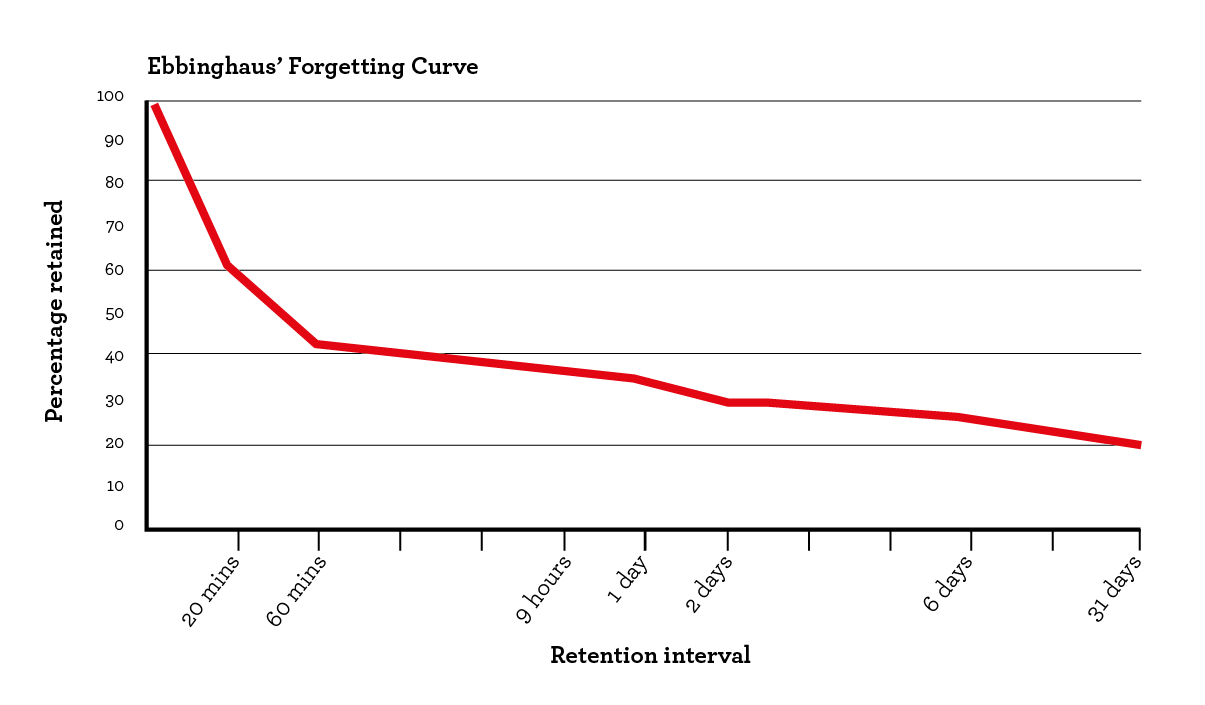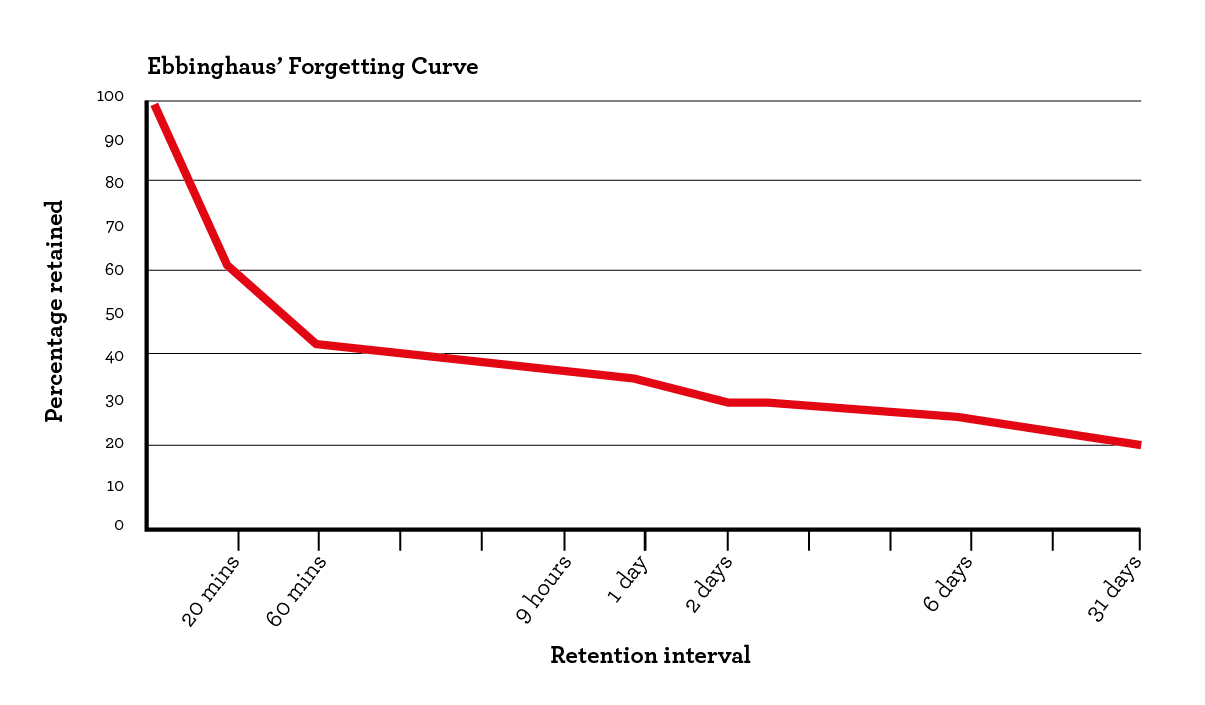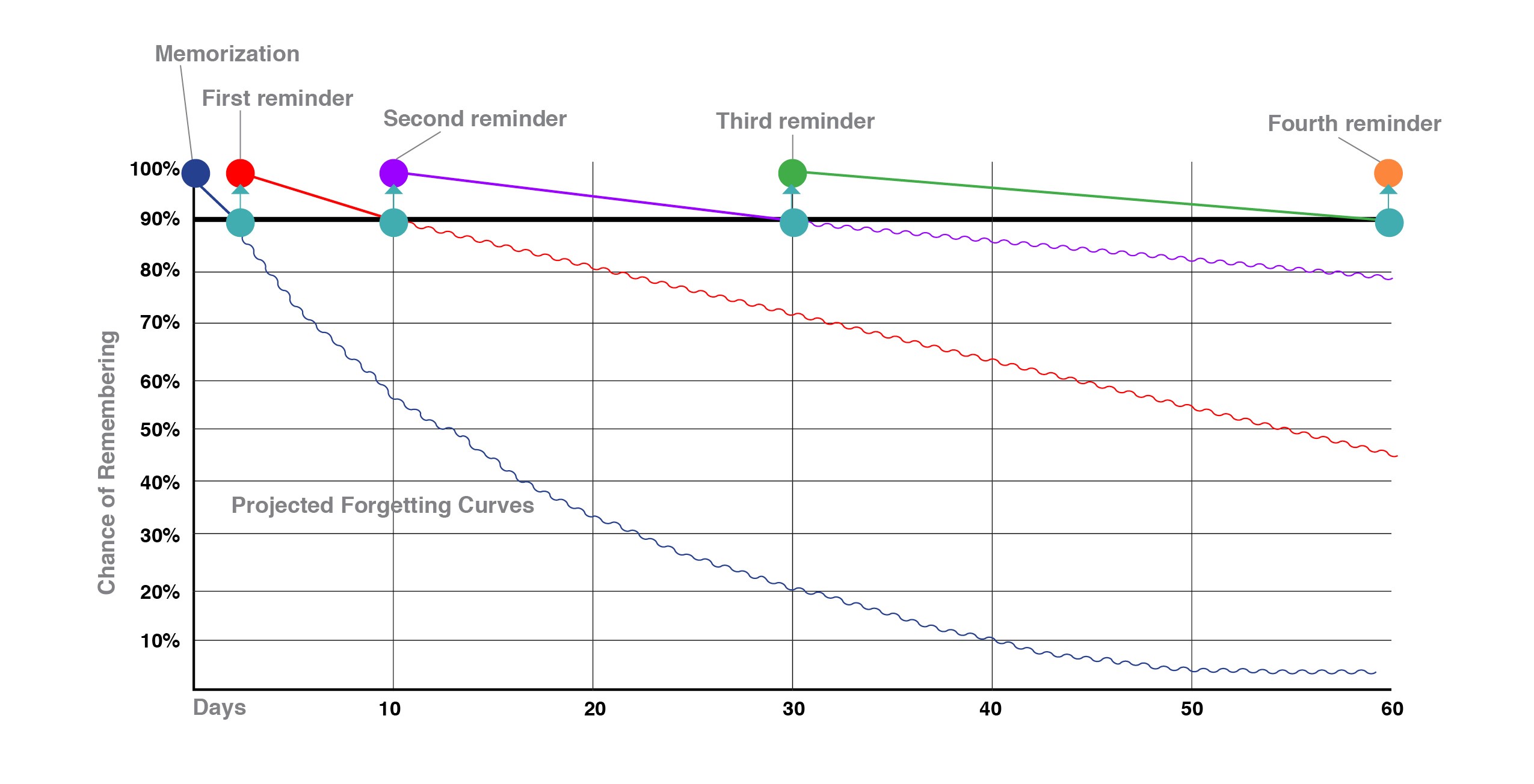1 min read
Most Staffing Firms are Not Built to Scale, But to Survive
Most staffing firms don’t struggle to scale because their teams aren’t working hard. They struggle because they don’t have a real go-to-market...

Do you remember that time when you walked out of that workshop feeling exhausted and overwhelmed but excited about all of the new ideas and insights, and the very next day you applied everything you learned?
Me neither.
Whether it’s the morning of an important sales presentation or five minutes before an important candidate negotiation, we have all tried to remember previous trainings, such as things we read, things we were told, or videos we watched, in hopes of being able to recall and apply that information in the heat of the candidate conversation. It always seems to be right on the tip of our tongue but the words never make it out of our mouth.
The reason we can't recall the information is because learning is a continual process and long-term retention can't be achieved after just one learning (workshop). Humans need time, and self-reflection before information can be stored into long-term memory and recalled at a later date.
Neuroscience research has shown that trying to retain a large amount of information in a short period of time goes against the normal functioning of our brain. The human brain is not designed to retain information after just one lesson. But thanks to progress in cognitive sciences, we know how the human brain works which enables us to learn more efficiently and effectively.
Why Spaced Reinforcement?
To understand the value and importance of spaced reinforcement we first must understand Ebbinghause's Forgetting Curve and the spacing effect. Hermann Ebbinghaus was a German psychologist who pointed out (from his research) that humans have a definite learning curve as well as a forgetting curve. The learning curve describes the natural course of duration a new learner takes to understand a concept for the first time. Similarly, the forgetting curve shows the loss of learning that occurs over time in the absence of any attempt to reinforce what was learned.
As you can see in the illustration below, learners forget 40% of what they learned in just 20 minutes following the lesson when no attempt to recall the information is made. And at 31 days learners are only able to recall 20% of what they learned.
I know, it's crazy!

The Takeaway: Effective training must be designed to help learners reduce forgetting.
What is Spaced Reinforcement?
During his work, Ebbinghaus found a way to tamper down the forgetting curve by implementing reminders (reinforcement) at increasingly longer intervals. Ebbinghaus also pointed out the “spacing effect” wherein he says repeating chunks of information spaced over time is helpful in reducing the loss of knowledge gained and boost retention of knowledge.
Spaced reinforcement is a learning method for reinforcing previously taught training material. Rather than repeating the entire course, information from the course is broken down into small bite-size pieces of information and delivered to the learners repeatedly at spaced intervals.
Flash cards, and reviewing flash cards every few days to test your retention of information is a good example of a spaced reinforcement exercise.
A spaced reminder is akin to taking a booster shot. The booster shot serves up reminders to the body of how to protect itself from the virus or disease. Without the booster shot, the original dose losses it's effect.
You can see the impact of these spaced reminders in the illustration below. The diagram shows how learning is retained when training is reinforced with four separate spaced reinforcement reminders. The difference in results is dramatic.

Bottom Line: If you expect your employees to bank the most important knowledge they need to be successful into long-term memory and apply it in the "heat of the conversation," spaced reinforcement is your solution. Spaced reinforcement is key to learner retention. Spaced reinforcement is how you transform new skills into daily habits.
At Menemsha Group, we use adaptive technology to facilitate spaced learning and overcome the challenge of the forgetting curve.
Tips for Designing, Incorporating Spaced Reinforcement Exercises

1 min read
Most staffing firms don’t struggle to scale because their teams aren’t working hard. They struggle because they don’t have a real go-to-market...

In my previous post, How to Prevent Unexpected Contract Terminations, I shared how systemizing consultant and client check-ins at key milestones...

About a year ago, I was serving as the fractional revenue leader, managing sales and recruiting for a client.